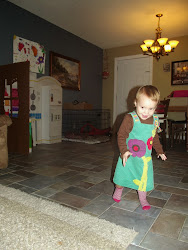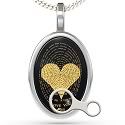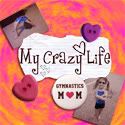Conceiving After 40
Today, many women are choosing to delay having children until their later years. In fact, one in five women wait until after the age of thirty-five to have their first child. And the past two decades have seen a fifty percent increase in the number of women over forty giving birth for the first time. According to the U.S. Center for Disease Control and Prevention, the number of women giving birth into their forties, fifties and beyond is at record highs. Although it may be possible for a woman to conceive in her forties, and with medical intervention, carry a child to term in her fifties and sixties, it’s important that she fully understand the risks inherent in that decision. Medical science has made many advances, but can still not guarantee the health of the child or the mother.
The decision to delay childbearing until one is older is generally due to socioeconomic factors. Many women want to be firmly established in their careers and financially stable before they have children. And once on a career path, many simply don’t have time for marriage or children. The age at which women marry has been steadily increasing and in many countries is now close to or over thirty. So, although the most fertile period of a woman’s life is between the ages of twenty to twenty-four, in today’s world, few women are ready to become mothers at that age.
There are certainly career and financial advantages to delaying motherhood. Raising children is an expensive proposition and for young mothers, particularly those that are single, it can be a struggle. Older women are also often better prepared emotionally for parenthood. Unfortunately, the disadvantages of waiting to have children are considerable.
As you age, the chances that you will able to conceive naturally diminish, as fertility decreases in inverse proportion to your age. By the time you reach forty, you only have one tenth of the eggs you did at puberty and those eggs are less viable and far more likely to have chromosomal abnormalities, increasing the risk of miscarriage and birth defects. By the time you reach age forty-three; you will have pretty much exhausted your supply of eggs. After age forty-five, you will probably have to use donor eggs. Even with fertility treatments, your chances of conceiving and carrying a child to term after the age of forty becomes slimmer with each passing month.
Pregnancy and childbirth also become far riskier as you age. By age forty you are twice as likely to experience serious complications as compared to a woman in her prime childbearing years. These complications include: miscarriage, ectopic pregnancy, pre-eclampsia, placenta praevia, placental abruption, gestational diabetes, fetal distress and premature delivery. Even those older mothers who experience normal low-risk pregnancies have a disproportionately high rate of Caesarean delivery as their uteruses tend to not contract as well, resulting in an abnormal labour.
This may seem like a dismal picture, but it is important to remember that many women over forty beat the odds, are able to conceive and have trouble-free pregnancies and perfectly healthy babies. But the decision to conceive after forty is not one that should be taken lightly. If you are lucky enough to conceive, make sure you get the best possible prenatal care and do everything you can to reduce the risks.
Hello my name is Nisha Sharma, I love to write about parenting, children and give advice to mums, why not visit our website to see the latest offers on pushchairs and toddler beds.
Casey Colette says:
Maternal age influences the chances of conceiving a baby with Down syndrome. At maternal age 20 to 24, the probability is one in 1562; at age 35 to 39 the probability is one in 214, and above age 45 the probability is one in 19. Although the probability increases with maternal age, 80% of children with Down syndrome are born to women under the age of 35, reflecting the overall fertility of that age group. Recent data also suggest that paternal age, especially beyond 42, also increases the risk of Down syndrome manifesting. What causes the rise in these genetic diseases as a function of maternal age? While all the reasons are unknown, the main fault lies with abnormal division of the older ova, or eggs, in a phenomenon called nondisjunction. During nondisjunction, an egg undergoing division will receive either more or less than its fair share of chromosomes. Upon conception, the resulting embryo will contain a greater (or lesser) number of chromosomes than expected, leading to physical deformities, mental retardation, or even death. Older women are much more at risk for nondisjunction, due mostly to the fact that their eggs are also older.
What causes the rise in these genetic diseases as a function of maternal age? While all the reasons are unknown, the main fault lies with abnormal division of the older ova, or eggs, in a phenomenon called nondisjunction. During nondisjunction, an egg undergoing division will receive either more or less than its fair share of chromosomes. Upon conception, the resulting embryo will contain a greater (or lesser) number of chromosomes than expected, leading to physical deformities, mental retardation, or even death. Older women are much more at risk for nondisjunction, due mostly to the fact that their eggs are also older.Mother's Chance of Chance of Chromosomal
Age at Delivery Down Syndrome Abnormality
20 1 in 1923 1 in 526
21 1 in 1695 1 in 526
22 1 in 1538 1 in 500
23 1 in 1408 1 in 500
24 1 in 1299 1 in 476
25 1 in 1205 1 in 476
26 1 in 1124 1 in 476
27 1 in 1053 1 in 455
28 1 in 990 1 in 435
29 1 in 935 1 in 417
30 1 in 885 1 in 384
31 1 in 826 1 in 384
32 1 in 725 1 in 322
33 1 in 592 1 in 285
34 1 in 465 1 in 243
35 1 in 365 1 in 178
36 1 in 287 1 in 149
37 1 in 225 1 in 123
38 1 in 177 1 in 105
39 1 in 139 1 in 80
40 1 in 109 1 in 63
41 1 in 85 1 in 48
42 1 in 67 1 in 39
43 1 in 53 1 in 31
44 1 in 41 1 in 24
45 1 in 32 1 in 18
46 1 in 25 1 in 15
47 1 in 20 1 in 11
48 1 in 16 1 in 8
49 1 in 12 1 in 7
Source:
Dr. Wendy Cox Casey Colette says; "Please feel free to share your thoughts on this."







































0 comments:
Post a Comment
Wait! If you are entering my giveaway, please make sure you are following my blog through Google Friend Connect. It is NOT mandatory -However, karma begs that you do! Here's why; the more followers this blog has, the more great things I can continue to bring you. Remember in order to win on Locomotion of Expressions, all you have to do is place one comment stating that you want to win.